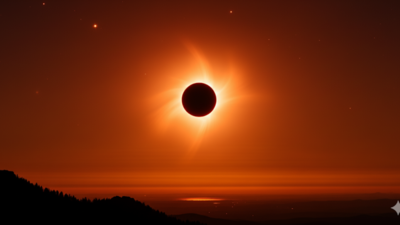ARTICLE AD BOX

The final solar eclipse of 2025 on September 21 will be partially visible in southern Australia/Representative Image
In an extraordinary celestial turn, September 2025 is bookended by two eclipses, a lunar eclipse on the 7th and a solar eclipse just 15 days later. While the Moon recently turned a vivid red in a dramatic lunar display, the sky will offer another rare phenomenon: a partial solar eclipse on September 21, timed just before the equinox.
However, this spectacle won’t be visible everywhere, and the UAE is among the regions that will miss it.
Solar eclipse timing and nature – Partial eclipse near the equinox
The final solar eclipse of 2025 is scheduled for September 21. Unlike a total eclipse, this will be a partial solar eclipse, where the Moon covers only part of the Sun, creating a crescent-shaped sliver of sunlight.This event holds additional significance because it closely precedes the September equinox, which falls on September 22, 2025.
The equinox is one of two moments in the year when the Sun is directly above the Earth’s equator, resulting in nearly equal day and night lengths across the globe. Because of this timing, the eclipse is also being called an "equinox eclipse", adding to its astronomical and symbolic intrigue.The event also carries cultural and astrological meaning. This year's Pitru Paksha — a fortnight in the Hindu calendar dedicated to ancestral remembrance and rituals — uniquely begins with a lunar eclipse and ends with this solar eclipse, a rare alignment astrologers consider especially potent.
Who can see it – Visibility regions and eclipse coverage
The September 21 partial solar eclipse will be visible only in specific parts of the Southern Hemisphere, offering clear views to skywatchers in select regions. Key visibility details include:
- New Zealand: Some of the most prominent views will occur here, particularly in southern cities like Dunedin, where up to 72% of the Sun is expected to be obscured.
- Eastern Australia: Areas on the eastern coastline will also get a sunrise view of the eclipse.
- South Pacific Islands: Several island regions across the South Pacific will witness partial coverage during early daylight hours.
- Antarctica: Observers in some Antarctic locations could experience extensive eclipse coverage, likely among the most dramatic views.
Where the Eclipse Will Be Visible:
| Region | Eclipse Visibility |
| New Zealand (e.g., Dunedin) | Up to 72% of the Sun obscured |
| Eastern Australia | Partial eclipse at sunrise |
| South Pacific Islands | Partial eclipse |
| Antarctica | Significant coverage |
| UAE | Not visible |
| India, Pakistan, Nepal | Not visible |
| Sri Lanka, Afghanistan | Not visible |
| North & South America | Not visible |
Where it won’t be seen – UAE and large parts of the world to miss out
Unlike the lunar eclipse on September 7, which had wide visibility across many countries, this solar eclipse will not be visible in the UAE or most parts of the Northern Hemisphere.Countries that will not witness any part of the eclipse include:
- United Arab Emirates
- India
- Pakistan
- Nepal
- Sri Lanka
- Afghanistan
- All of North America
- All of South America
This means millions of skywatchers across Asia and the Americas will miss the event entirely — a sharp contrast to the global excitement generated by the earlier lunar eclipse.
Understanding solar eclipses – Types and what to expect
A solar eclipse occurs when the Moon moves between the Earth and the Sun, partially or fully blocking sunlight in specific areas on Earth. These alignments don’t happen frequently in the same place due to the precise positioning required.There are three main types of solar eclipses:
- Total Solar Eclipse
- The Moon completely covers the Sun.
- Observers in a narrow zone experience brief daylight darkness.
- Spectacular but rare.
- Partial Solar Eclipse
- Only part of the Sun is covered by the Moon.
- Creates a crescent or “bitten” appearance of the Sun.
- This is the type occurring on September 21, 2025.
- Annular Solar Eclipse
- The Moon is farther from Earth and doesn’t fully cover the Sun.
- A ring of sunlight remains visible, forming the “ring of fire” effect.
Although this particular eclipse is not a total one, its timing, rarity, and symbolic links to the equinox and Pitru Paksha make it a notable event in the 2025 celestial calendar.



.png)
.png)
.png)
















 2 hours ago
5
2 hours ago
5







 English (US) ·
English (US) ·